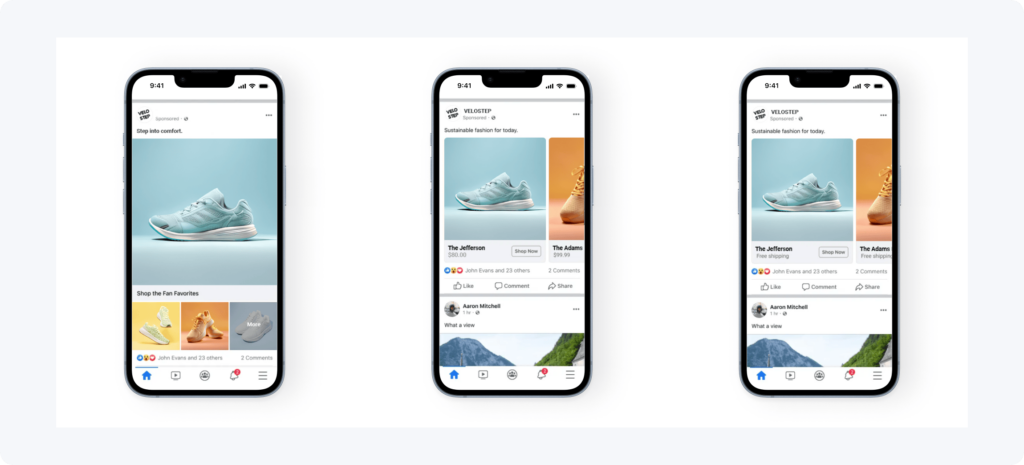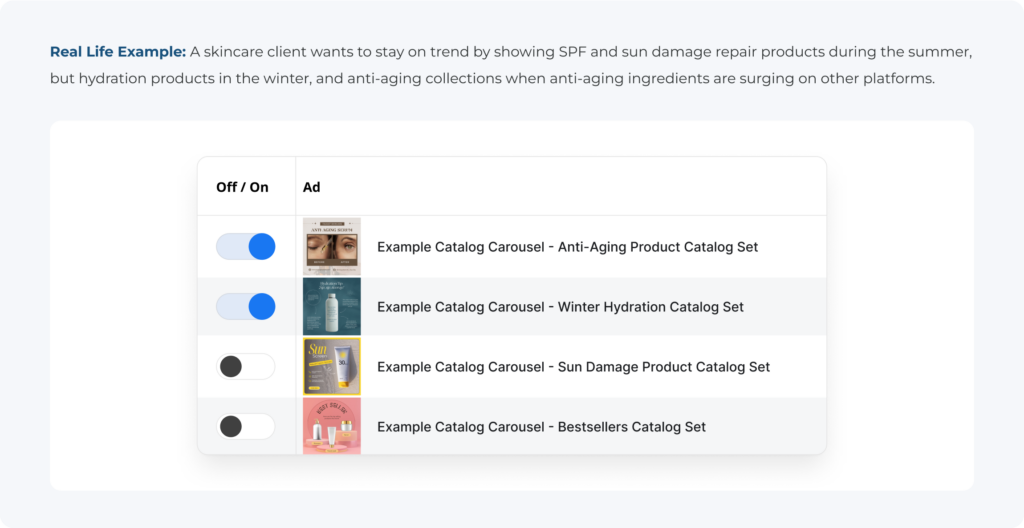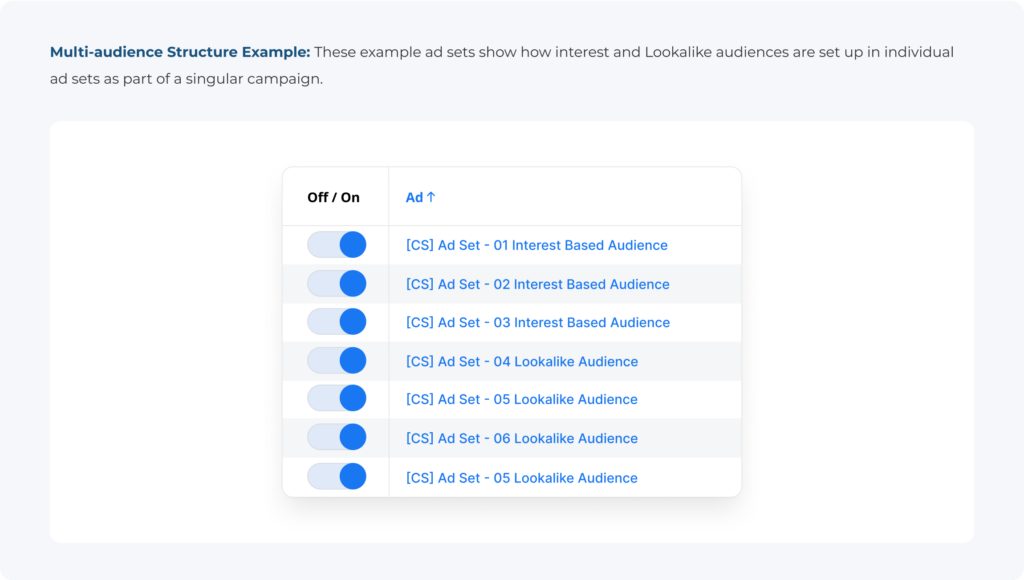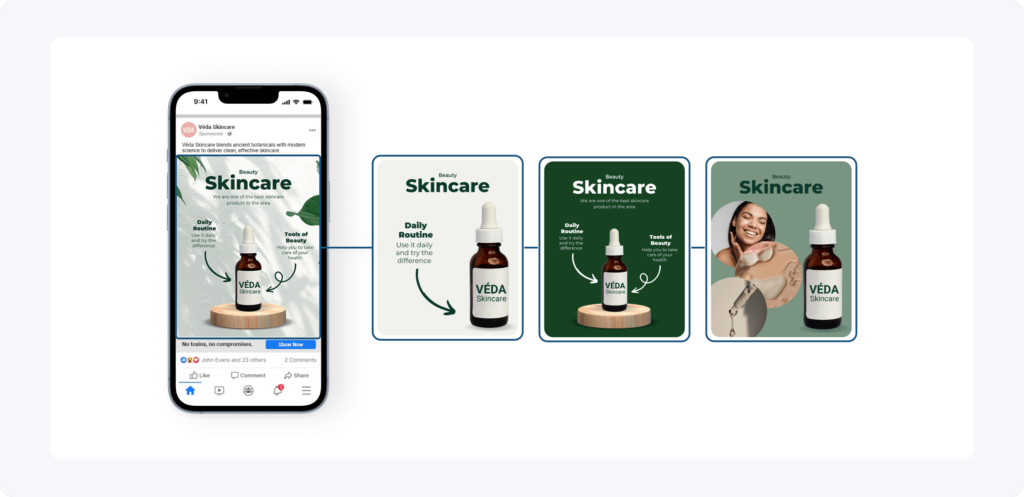Running ecommerce ads on Meta can be overwhelming – even a seasoned social media specialist can hit a wall.
Cracking the code of Meta Ecommerce ads with the revolving door of algorithm changes, rotating trends, and new social platforms looks different for every account. What works in one account may not work in another, so testing at every level is a must.
Meta ads still remain one of the most effective methods to increase brand awareness & ultimately find new customers, but proving that social media has power beyond just upper funnel marketing is a challenge. Last-touch Purchases are more important than ever. These three tests are pulled directly from our own testing library to provide testing ideas so that you can start seeing Purchases directly from social ads.
Are Meta Ads Still Worth It?
Meta remains an invaluable channel for customer acquisition despite newer competing platforms. In fact, Facebook remains the number 1 most active social media platform worldwide with 2.958 billion users each month. Instagram is slightly smaller at number 4 with 2 billion users each month.
Meta platforms are active and are where users spend their downtime on the internet. The addition of Meta Shops has increased the ease of purchasing through these platforms as well – making it a direct link to your potential customers.
Test 1: Product Catalog Ads
Product Catalog Ads are carousels of your products pulled from a commerce set that the algorithm uses to show products from the set that it anticipates the user is most likely to engage with or purchase. While using Product Catalogs Ads is standard best practice, there are many ways to utilize these outside of only using the full catalog in a singular ad.

Ad sets that do NOT use Advantage+ version of Catalog Ads can have multiple catalog ads built or running at the same time. This structure allows you to run new catalog ads with different catalog sets throughout the year or launch several at a time. Why utilize this? Trends are a huge part of staying relevant on social media, even in paid channels. Updating catalog sets with trending products that are curated strategically with current trends in mind can lead to increased Last Touch Purchases from social ads.
Real Life Example: A skincare client wants to stay on trend by showing SPF and sun damage repair products during the summer, but hydration products in the winter, and anti-aging collections when anti-aging ingredients are surging on other platforms.

Start by creating a Catalog ad for each season or trend using an appropriate catalog set and simple but specific ad copy. Add one Catalog Ad into a relevant Sales campaign alongside standard ads and compare Last Click or Publisher data of the ad set before and after launching.
As trends change or goals shift, continue creating and adding more Catalog Ads with different featured products into the ad set or switch to a new ones within the same ad sets.
Because the catalog ads link to the direct product page, there is less barrier to purchase than there would with a standard ad. Watch for budget cannibalization as the algorithm will favor these to standard ads.
Test 2: Multi-audience Structure
Running a campaign with multiple audiences may go against standard best practices, but doing so has many benefits, including testing a multitude of audiences at once for optimal results and targeting different audience segments without sacrificing budget or time.
In an upper funnel or cold audience campaign, build 3-15 ad sets (depending on budget) that vary in size and audience type (i.e. interest based, demographic based, Lookalike lists, Broad open audience). Keeping the ads identical between the audiences will help control this experiment. Next, choose a budget optimization method based on KPIs and overall budget.

Ad Set Budget Optimization: Utilize moving budget between audiences based on performance. This method may be best for small budget clients or if the main KPI is performance outside of the Meta Publisher (such as Last Click Google Analytics Purchases).
Campaign Budget Optimization (now called Advantage Campaign Budget): Allows the algorithm to determine where the budget is best spent but bases the decision on Meta Publisher data. This is best if your KPI is within the Meta Publisher data, such as View Through or Click Through Purchases or budget is not restricted and willing to scale quickly.
Once launched, cull or launch new audiences as goals indicate. Bonus tip, using Existing Posts of the ads allows social proof to carry from audience to audience, keeping the ads controlled between audience variations.
Test 3: Dynamic Campaign with Singular Product Focus
Dynamic campaigns have many benefits that can save time and money on testing for ecommerce (and Lead Generation) accounts. This method allows the Meta algorithm to choose from a combination of creatives and copy.
Create one campaign with a targeted demographic audience that has shown promise in the past (possibly from Test 2’s strategy). Set up one Dynamic ad within this ad set by toggling the dynamic creative on at the ad set level before publishing the ad set.
Upload 5-10 photos and images that vary in size & style as well as 3-5 variations of copy and headlines that will coordinate with any of the creatives.
Meta will serve different combinations of the creatives & copy based on Meta Publisher Performance. To view performance data on each creatives/ copy/ headline, click into the campaign and view Breakdowns in the upper right corner of the Ads Manager & select “By Dynamic Creative Element”.
From here, there are two main options to take away from this test:
- Once the algorithm picks a top creative & copy, use that in your other campaigns as a static ad. This proves out ads quicker than building variation after variation to test with.
- Keep your dynamic campaign running if its performance contributes to your KPIs. In some accounts, even though the algorithm chooses variations based on Publisher data, Last Click returns increase as well.

Finding new tests on Meta can be difficult but sometimes thinking outside the box of Best Practices can provide surprising results!
